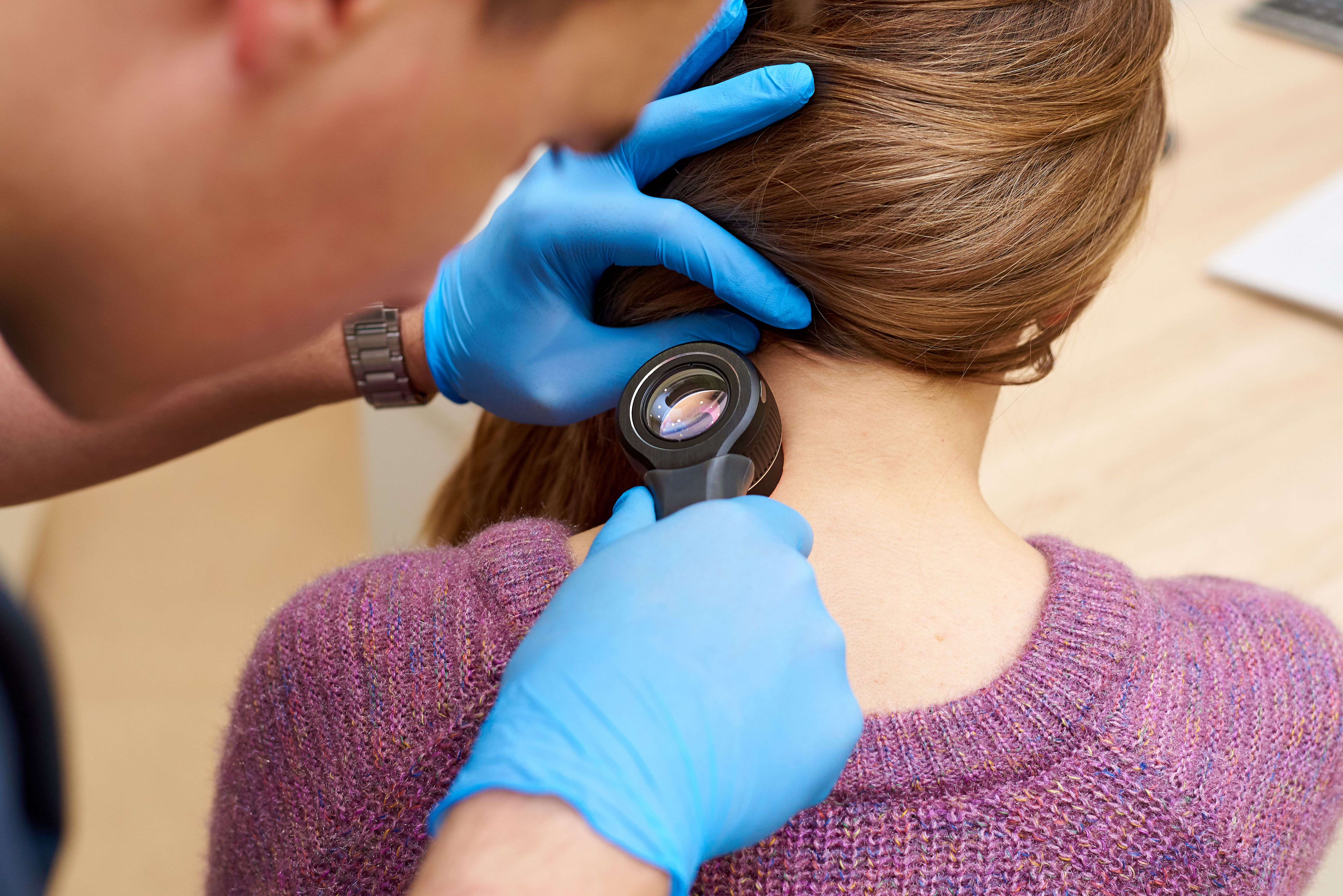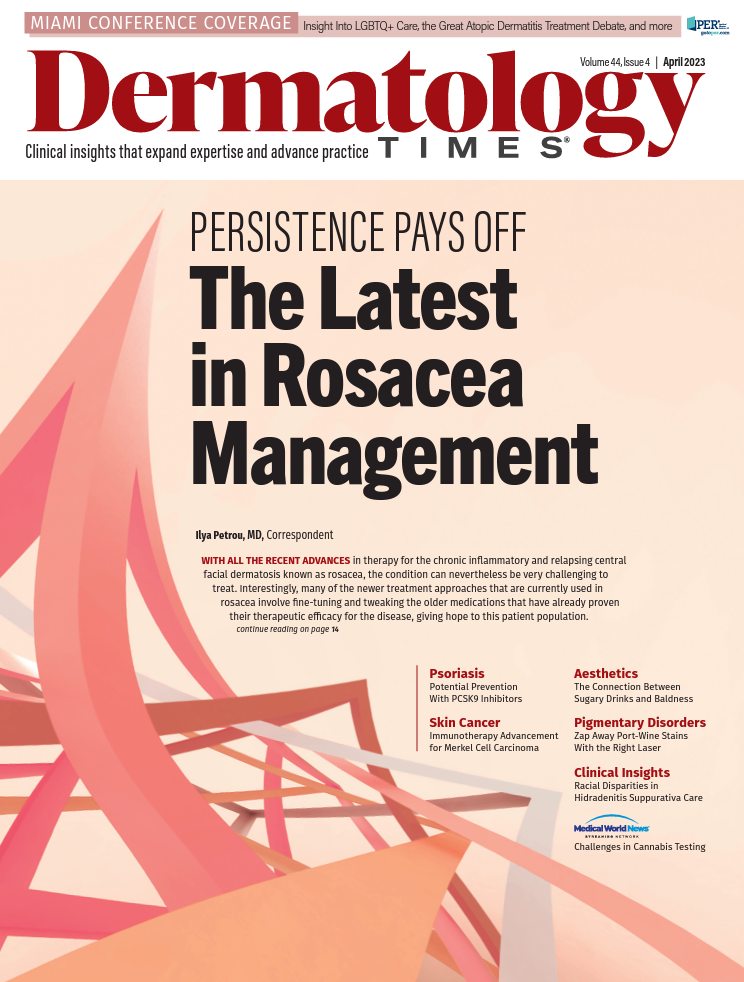- Case-Based Roundtable
- General Dermatology
- Eczema
- Chronic Hand Eczema
- Alopecia
- Aesthetics
- Vitiligo
- COVID-19
- Actinic Keratosis
- Precision Medicine and Biologics
- Rare Disease
- Wound Care
- Rosacea
- Psoriasis
- Psoriatic Arthritis
- Atopic Dermatitis
- Melasma
- NP and PA
- Skin Cancer
- Hidradenitis Suppurativa
- Drug Watch
- Pigmentary Disorders
- Acne
- Pediatric Dermatology
- Practice Management
- Prurigo Nodularis
- Buy-and-Bill
Publication
Article
Dermatology Times
The Amazing Skin Microbiome
Author(s):
The skin microbiome varies from person to person based on sex, age, body location, antimicrobial peptide presence, and immune function.
ViktoriiaNovokhatska/AdobeStock

What is the normal skin microbiome?
The normal skin microbiome cannot be universally defined. The skin microbiome varies from person to person based on sex, age, body location, antimicrobial peptide presence, and immune function. It is not possible to “normalize” the microbiome for any individual permanently. Only small temporary changes can be achieved through the topical application of live bacterial materials or nutritional sources for the resident microflora. The normal skin microbiome is made up of largely gram-positive species. The skin surface is a rather harsh microbial environment with the epidermal keratinocytes controlling the microbiome through the production of beta-defensins and cathelicidins.
What does the claim “microbiome friendly” mean?
It is hard for cosmetic companies to make microbiome claims without implying drug-like effects. The currently popular claim is “microbiome friendly,” which means that the skin care product does not change the microbiome. This is a very easy claim to support as you swab the skin prior to product application and then you swab the skin after product application for several days to weeks. If there are no differences in the microbiome, the skin care product can be labeled “microbiome friendly.” This may be an important claim for cleansers that theoretically might destroy the skin microbiome, but the microbiome is only altered temporarily by cleanser and reconstitutes itself very quickly. It is possible to say that most all skin care products are “microbiome friendly.”
What is the difference between resident and transient microbial species? Is the distinction important?
The distinction between resident and transient microbial species is important and represents the basis for human hygiene. Resident microflorarefer to species that reproduce on the skin with the capacity for sustained growth. Resident microflorainclude all species of C. acnes, Staphepidermidis, Micrococci, Corynebacteria, and Acinetobacter. Transient microflora refers to species that are contaminants with little or no capacity for sustained growth and reproduction. Examples of common transient microflora include Staphaureus, E. coli, and Pseudomonas aeroguinosa. However, the microbiome is extremely abundant and diverse with over 113 phylotypesidentified.
Hand washing is intended to remove transient microbial species from the skin surface, since these organisms are potentially pathogenic. Removing the pathogenic organisms before they begin to reproduce and cause infection is critical to health and the basis of hygiene.
Can antibacterial cleansers permanently damage the microbiome?
No, antibacterial cleansers cannot permanently damage the microbiome. The microbiome is constantly being renewed. The skin surface is a battleground for organisms that compete for space and nutritional resources on a daily basis. Every square inch of the skin surface has a micro-organism inhabiting the space, meaning we are literally coated in bacteria. The resident organisms reproduce quickly such that any voids in the skin bacterial blanket are rapidly filled. Antibacterial cleansers may destroy some resident and transient bacteria, but the non-pathogenic organisms reproduce quickly to fill the void. Antibacterial cleansers are currently under review by the FDA because no one has successfully demonstrated that they are truly antibacterial!
What is the difference between topical skin care products containingprobiotics and prebiotics?
Probiotic skin care products contain living bacteria designed to populate the skin surface with “good” bacteria. They must be preservative free or the bacteria would die and therefore must be purchased cold out of a refrigerated case in the store. Most of these topical products contain the same dairy bacteria that are found in yogurt. Prebiotics are nutrients that encourage the growth of microbiome organisms. Sometimes inulin is used topically for this purpose.
Should I recommend microbiome-based acne products that reduce c. acnes in the microbiome?
The concept of putting “good bacteria” on the skin to get rid of the “bad c.acnes bacteria” to treat acne is compelling. There are a number of OTC acne formulations based on this principle; however, there is a problem in claim assessment. In order to make an OTC acne claim, products must contain one of the monographed ingredients, such as benzoyl peroxide or salicylic acid. Benzoyl peroxide will destroy any microbiome based ingredients and cannot be used. Thus, salicylic acid is put in many of the microbiome-based products. It is impossible to tell whether the active agent is the salicylic acid or the microbiome-based ingredient. Usually, studies are not done to separately determine the additive benefit of the microbiome-based ingredient.






